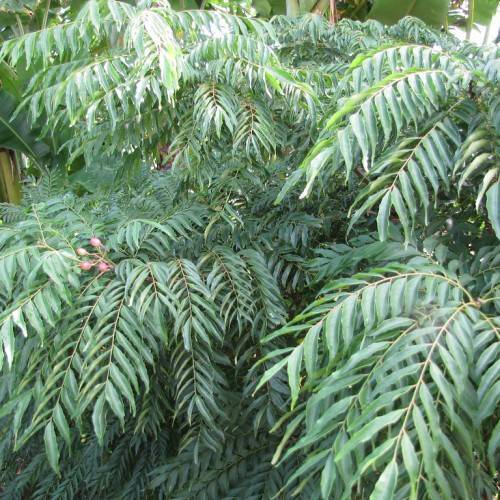
curry leaf
Murraya koenigii
Cycle:
Perennial
Watering:
Average
Hardiness Zone:
10 - 12
Flowers:
Flowers
Sun:
full sun,part shade
Leaf:
Yes
Growth Rate:
Low
Maintenance:
Low
Salt Tolerant:
Yes
Tropical:
Yes
Care Level:
Medium
watering
Curry leaf plants should be watered regularly and deeply. Aim for about 2 inches of water per week, though depending on the size of your plant and the temperature, you might need to water more often; in hot summer months, you may need to water as often as every other day. If the leaves are turning yellow, then the plant is not getting enough water. When it's time to water, saturate the soil until there's water coming out of the drainage holes.
sunlight
Curry leaf, or Murraya koenigii, needs plenty of direct sunlight to flourish indoors or outdoors. Indoors, it should be placed near a south- or west-facing window to give 6-8 hours of direct sunlight per day. Outdoors, it should be given at least 6 hours of direct outdoor sunlight. When grown outdoors, the curry leaf should be given a spot that is partially shaded during the hottest part of the day to help protect the leaves from burning in direct sunlight, and still provides ample sun for the plant.
pruning
Curry leaf plants can be pruned at any time of the year although late summer and early autumn are the best times for doing so. Prune the plant to maintain its shape and to encourage new growth and flowering. Remove any dead, diseased, or broken branches and stems and any unruly growth. Shape the plant to maintain an overall rounded shape and to promote the growth of multiple stems. Trim back any stems that reach taller than 24 inches, as this encourages bushy growth. Reduce the length of long branches and stems by a third and thin out any tangled, overcrowded branches. Remove any branches that cross over, rub, or encroach on the center of the plant. Prune the plant lightly each year in order to maintain overall shape.
